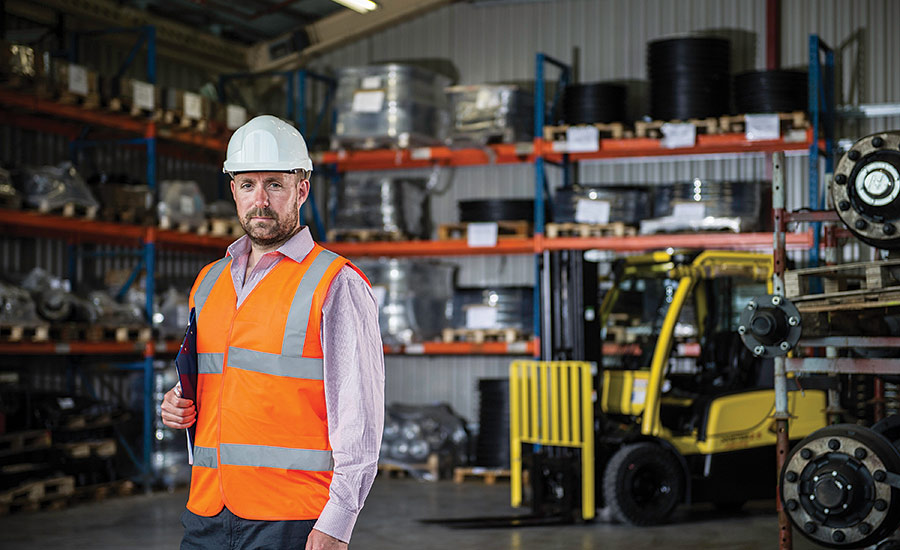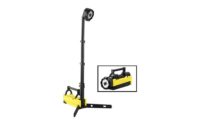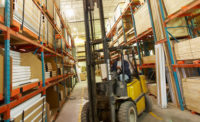Warehousing and industrial operations have seen a lot of change over the past few years, with a rapid increase in the innovations that go into handling the logistics of e-commerce businesses, construction, and storage. With the rise of consumer demand, it has also meant that the equipment used for running these facilities has undergone modifications and improvements too.
More specifically, forklifts play a crucial role in material handling. With more staff and more stock in warehousing now more than ever, it’s meant that there has had to be a shift in the way of thinking about safety.
As technology continues to evolve, therefore, so does the focus on enhancing forklift safety. The latest innovations shaping the forklift industry, from smart sensors to automated warning systems and advanced operator training simulators continue to become more advanced.
The need for forklift safety innovations
Forklifts, while indispensable for optimal operations, pose inherent risks in the workplace, especially when they are not used correctly. Accidents, collisions, and injuries are challenges that businesses aim to mitigate through innovative safety solutions which are greatly aided by evolutions in technology. The integration of new safety inventions not only enhances safety but also contributes to increased efficiency and productivity in warehousing and logistics.
Smart sensors and collision avoidance
One of the groundbreaking innovations in forklift safety that has proven to be a game-changer in the industry is the implementation of smart sensors. These sensors are designed to detect obstacles, pedestrians, and other forklifts in the vicinity. Using a combination of ultrasonic, infrared, and radar tech, or a combination of all three, smart sensors provide real-time data to the forklift operator, alerting them to potential hazards and obstacles. This proactive approach significantly reduces the risk of collisions and improves overall workplace safety.
How smart sensors work
Smart sensors utilize advanced algorithms to interpret data from their surroundings. When an obstacle is detected within the predefined range, the system triggers an alert, either through visual indicators or audible alarms. Some more sophisticated systems can even initiate automatic braking or speed reduction on behalf of the operator to prevent accidents. This is especially useful in mitigating accidents caused simply by human error.
Automated warning systems: enhancing visibility and awareness
Automated warning systems work hand-in-hand with smart sensors by providing enhanced visibility and awareness to forklift operators. These systems often include features such as 360-degree cameras, proximity alarms, and assistance in detecting blind spots. By drawing the operator's attention to blind spots and enhancing their visibility, technology offers a comprehensive view of the surroundings. Systems like these assist operators in making informed decisions, reducing the likelihood of accidents.
Benefits of Automated Warning Systems
Automated warning systems have several benefits for operators and warehouse managers. Some of these include:
360-Degree Visibility: Cameras positioned strategically on the forklift provide a complete view of the surroundings, minimizing blind spots.
Proximity Alarms: Audible alarms notify both the forklift operator and nearby pedestrians and obstacles of the forklift's presence, preventing accidental collisions.
Blind-Spot Detection: Sensors detect objects or individuals in blind spots and areas of low visibility, providing timely warnings to the operator who can react in time to prevent an accident.
Advanced Operator Training Simulators: Virtual Reality for Real-World Skills
Importance of training
Operator training is a fundamental aspect of forklift safety. In modern health and safety courses, advanced training simulators leverage virtual reality (VR) technology to create realistic, immersive scenarios for operators. These simulators allow trainees to navigate a virtual warehouse, handle loads, and respond to various challenges in a controlled environment. The hands-on experience gained through VR simulations enhances operator skills, reaction times, and decision-making, helping to ensure safer and more advanced forklift operations.
Key features of operator training simulators
A typical forklift simulator will have the following key features:
Realistic Scenarios: Simulators recreate realistic warehouse scenarios, including potential hazards and challenges.
Hands-On Training: Trainees practice operating a forklift in a virtual environment, honing their skills without the risks associated with real-world operations.
Performance Analytics: Simulators provide detailed performance analytics, allowing trainers to assess and address specific areas for improvement.
Future trends in forklift safety
The innovations discussed provide insights into the current state of innovations in forklift safety, but the industry continues to evolve. Looking ahead, several trends are expected to shape the future of forklift safety technology.
Artificial intelligence integration
The integration of artificial intelligence (AI) is anticipated to enhance forklift safety further. AI algorithms can analyze large amounts of data from sensors and cameras in real time, enabling predictive analytics for potential safety hazards and providing insights into areas for improvement. AI-driven systems can learn from past incidents, continuously improving their ability to prevent accidents and adapting to individual cases and set ups.
Advancements in fleet management
Forklifts equipped with special sensors can communicate vital data, such as maintenance requirements, usage patterns, and safety metrics, to a centralized system. This connectivity allows for proactive management and maintenance, reducing the risk of mechanical failures that could compromise safety, and further reducing risks in the workplace.
Augmented reality for enhanced operator guidance
The integration of Augmented reality (AR) systems is predicted to become more prominent and enhance operator guidance by overlaying digital information in the real-world environment. Forklift operators can receive visual cues, such as navigation paths and load weight indicators, directly through AR displays in their field of view. This technology will help promote precise and safe operation by providing operators with real-time information without distractions.
Making materials handling safer
Innovation in forklift safety and technology integration is a dynamic and ongoing process driven by the commitment to creating safer workplace environments. From smart sensors and automated warning systems to advanced operator training simulators, the current landscape reflects a holistic approach to mitigating risks associated with forklift operations.
As the industry evolves, the integration of artificial intelligence, communication and connectivity, and augmented reality is set to further improve safety standards, ensuring that forklifts continue to be indispensable tools in a secure and efficient workplace.
By embracing these advancements, warehouse managers and handling staff can look forward to an overall safer working environment.



